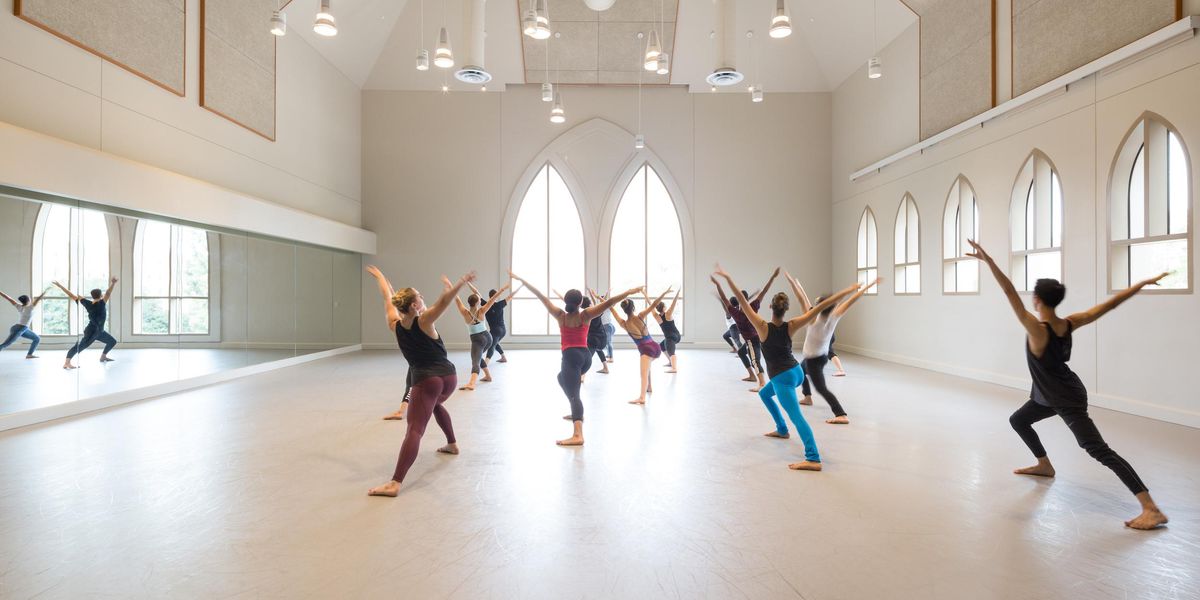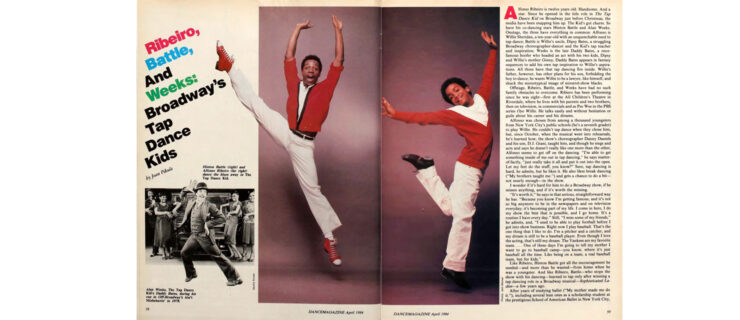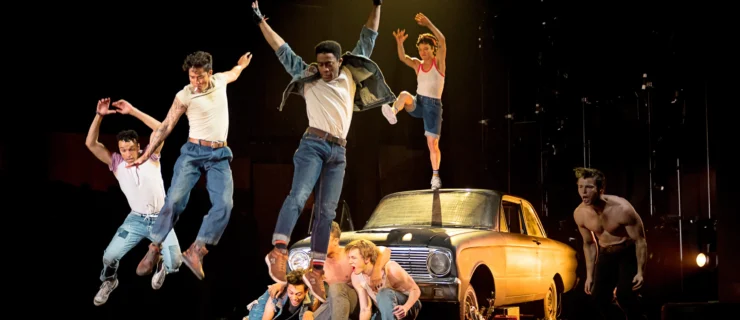Advice for Dancers: Flying High (With a Harness)
How to approach aerial dance training, fight panic attacks and avoid reinjury
I’m really psyched about learning how to do aerial dance. My friend says it feels like flying. Personally, I’m most attracted to moving in a completely different way without being limited in my jumps and turns. How should I prepare?
—Madison, Fort Lee, NJ
Please start slowly. This style of modern dance is not for the faint of heart, but it is gaining more ground. Even college dance programs, such as Pace University, now offer aerial dance classes. It’s a highly acrobatic genre where performers defy gravity, often upside down and high off the ground, by hanging from apparatuses, such as silk fabrics, ropes and slings. While this can add a beautiful dimension to the art form, it’s also dangerous to perform without a safety harness or net, not to mention proper training. As with any type of dance, you’ll need to build up sufficient power, strength, flexibility, grace and courage through meticulous training. Certified aerial trainers will teach you basic skills and spot you low to the ground above a high-impact gymnastics mat. The complex wraps (where you entwine fabric around your limbs) and acrobatic positions depend on repetition to achieve control before you can move on to a more advanced level. You’ll begin to work at greater heights after you’ve learned to safely execute the climbs, twists, spins, drops and contortions. To augment your training, you can take aerial fitness classes, typically at the same studio. They include a combination of strength, inversions and yoga on slings to help orient you for work upside down and in the air. Outside of class, you can do daily exercises to strengthen your core, upper back, forearms and grip, such as Pilates leg lifts, squeezing grip balls, pull-ups, lat pull-downs, incline sit-ups and hanging leg lifts. Once you’re in the studio, focus is crucial, so avoid energy-draining activities like excessive partying the day before a session. Enjoy the flight!
My panic attacks are driving me crazy! They started a few months ago after I landed a great role on Broadway where I have to sing. I can do the songs in my sleep, but the sudden panic during a rehearsal is terrifying. I’ve tried to ignore it, yet they keep coming and I’m seriously thinking about leaving the show. What should I do?
—Going Nuts, New York, NY
Take a deep breath! A panic attack is indeed frightening because it may seem like you’re losing your mind or even dying. Fortunately, an attack is a physically harmless episode that peaks rapidly and then goes away. You can ease your mind by getting a medical checkup to rule out any possible physical problems. The pressure of the show may have triggered your first attack, although it could also have occurred at random. Still, once you’ve experienced a panic attack, it’s common to develop an irrational fear of the situation where it took place, making another attack more likely. The good news is that there are well-established guidelines for stopping this cycle. The most powerful principle is to work with, not against, your fear. Acknowledge when you’re starting to panic and accept that you’re afraid (remember, it won’t physically hurt you). Stay in the situation, but keep the option of leaving open to avoid feeling trapped. Notice your symptoms (like breathlessness, muscle tension or a sense of unreality) so you can respond more effectively over time. Use tools to increase your comfort level during an attack, such as deep breathing, self-talk (“It’s okay to be afraid”) and muscle relaxation (tense, then relax, areas of tightness). It can also be reassuring to remind yourself that all panic attacks end, and it’s not unusual to go through several cycles of attacks while using these techniques, which you can work on with a behavioral psychologist. In some serious cases, prescription medications can help control the symptoms, reduce the frequency and severity of attacks and diminish the anxiety of having another one. Once you’re able to get over the fear of having attacks by being ready to cope with them, they will be less likely to occur.
Can I do anything to prevent reinjuring my hamstring now that I’m back in the studio? I want to make it through the whole season to show my director he can count on me to dance my usual repertoire.
—Fresh Start, Philadelphia, PA
Good question! Hamstring pulls often recur because of scar tissue that results from bleeding at the time of injury. This causes a muscle to become both tight and weak. To prevent reinjury, it’s essential to correct these problems with the help of your physical therapist before returning to a full workload. Continue to check in periodically with your PT after you’re performance-ready to lower your risk of reinjury. Lastly, to get your rep back on track, update your director about your recovery and explain how you’re actively working to avoid future hamstring problems.
Send your questions to:
Dr. Linda Hamilton
2000 Broadway, PH2C, New York, NY 10023
e-mail: [email protected]
Former New York City Ballet dancer Linda Hamilton, Ph.D., is a psychologist in private practice, the author of Advice for Dancers (Jossey-Bass) and co-author of The Dancer’s Way: The New York City Ballet Guide to Mind, Body, and Nutrition (St. Martin’s Griffin). Her website is drlindahamilton.com.




